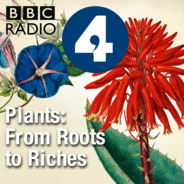Palms provide many basic necessities and are collectively one of the most important plants families after grasses and legumes. In 2007 and extraordinary new find came to light when a French plantation manager in Madagascar, came across a new species of palm tree 18metres high and with a 5m leaf span - visible from Google Earth. The palm family continues to grow at a rapid rate As new species make themselves known to science it's becoming vital to appreciate their potential uses. Discoveries are also helping to shed light on the "palm tree of life".Professor Kathy Willis meets Head of Palms at Kew, Bill Baker, to examine how new technology such as DNA sequencing has come to provide an amazing evolutionary record of palms over timescales greater than the fossil record can offer. Crucially, it's beginning to show when the diversification of palms began. In doing so, the genetic analysis is beginning to rewrite our understanding of the origins of the rainforest and looking to favour Alfred Russel Wallace's overlooked "museum model " of the evolution of ancient rainforests.With additional contributions from head of the Kew Palm House Scott Taylor, and former Head of Palms at Kew, John DransfieldProducer Adrian Washbourne.

Wissenschaft & Technik
Plants: From Roots to Riches Folgen
Kathy Willis considers our changing relationship with plants over the last 250 years - from tools to exploit, to objects of beauty, to being an essential resource we must conserve.
Folgen von Plants: From Roots to Riches
30 Folgen
-
Folge vom 19.08.2014Dynamic Rainforest
-
Folge vom 18.08.2014A Blooming Tree of LifeThe new science of DNA sequencing during the 1990's would not only lead to the mapping of complete human and plant genomes but it was to also revolutionise the classification for flowering plants. For the first time, rather than the 200 year old tradition of classifying plants just on their shape and structures, scientists could begin to infer how closely plants were related by examining the differences in DNA between different families and species.Kathy Willis examines the story of how new connections between plants were uncovered that appearance alone could never have suggested. She talks to Kew's Mark Chase, leader of the Angiosperm Plant Phylogeny Group - an international group of scientists who pioneered this work, and hears how this molecular analysis was to rewrite some of the many assumptions that we've made about close relationships within and between plant families.Kathy also hears from plant morphologist Paula Rudell on how detailed pollen analysis was to back up some of the controversial findings that this work was suggesting The practical implications of this new way of classifying are huge and could open the way to identifying new plants for medicinal use, and help accurately determine the ability of plants to withstand future environmental change.With additional contributions from Kew taxonomist Gwil Lewis and historian Jim EndersbyProducer Adrian Washbourne.
-
Folge vom 15.08.2014A Useful WeedAt a glance, Arabidopsis thaliana (Mouse ear cress) looks little more than a tiny flowering weed. But this nondescript plant became a Rosetta stone for understanding the molecular processes underpinning many plant traits when in 2000 it became the first plant to have its genome fully sequenced.Professor Kathy Willis hears how Arabidopsis bagged the role in plant genetics research similar to that played by mice and fruit flies in animal research, and how amidst arguments for and against the technique of modification, it became a key to introducing new characteristics in a quicker and more targeted way than traditional plant breeding.The overall size of the Arabidopsis genome however, is not typical of many plants. We hear how a new understanding of the surprisingly diverse range of genome sizes within the plant kingdom is shedding light on the speed of a plant's ability to reproduce and adapt in changing conditions, which could play a fundamental role in decoding the patterns of plant distribution we see around the world.With contributions from historian Jim Endersby, plant scientist Prof Liam Dolan and cytogeneticist Ilia Leitch.Producer Adrian Washbourne.
-
Folge vom 14.08.2014Capsules of LifeBy the end of the 20th century, concerns raised in the 1992 Rio Earth Summit about the fate of wild plants and their ecosystems meant that conservation in the field now needed to be complemented by methods away from a plant's natural habitat.Professor Kathy Willis pays a visit to the underground vaults of Kew's Millennium Seed Bank Partnership (MSBP), one in a network of 1300 seed banks around the world - and one of the main "ex situ" methods for conserving plant genetic material.Knowing the longevity and quality of seeds is vital if they're to be put to good use in the real world. We hear a testament to the length of seed survival as head of the MSBP reveals recent success in germinating a 200 year old packet of seeds collected from the Dutch East India Company Gardens in South Africa. And Kathy Willis discovers how research into variable climates during crop cycles on seed quality is providing new leads into which varieties of crops seeds to store, to ensure future sustainable food supplies.With contributions from seed morphologist Wolfgang Stuppy, MSB seed manager Janet Terry, Paul Smith head of the MSBP, and Hugh Pritchard head of MSBP seed conservation.Producer Adrian Washbourne.
